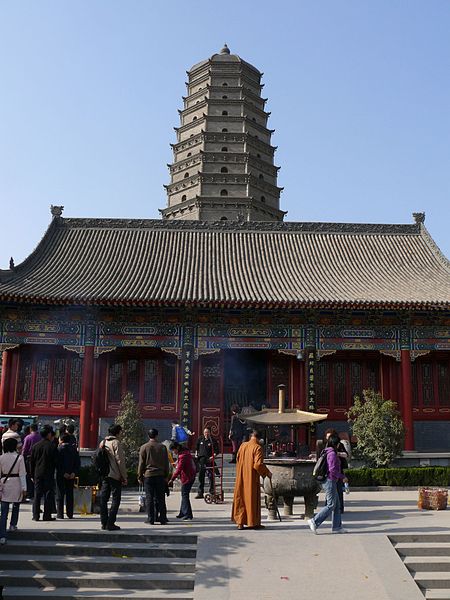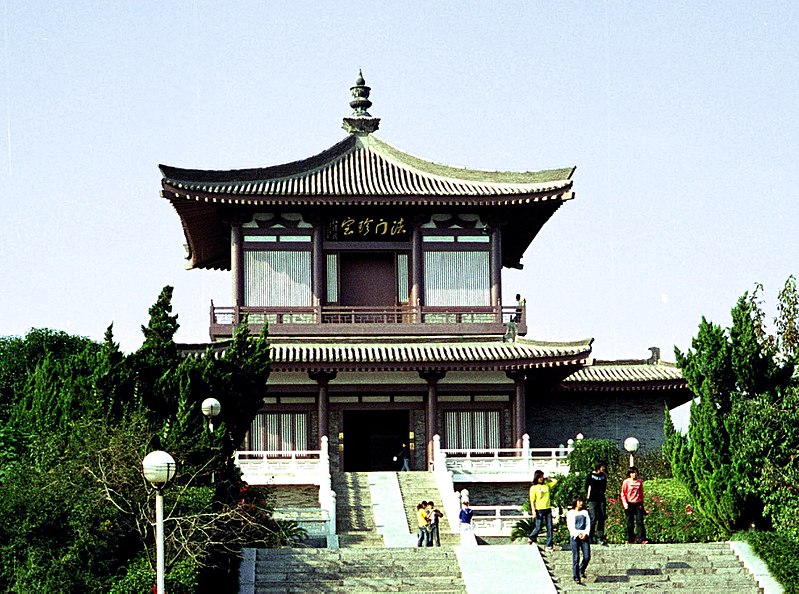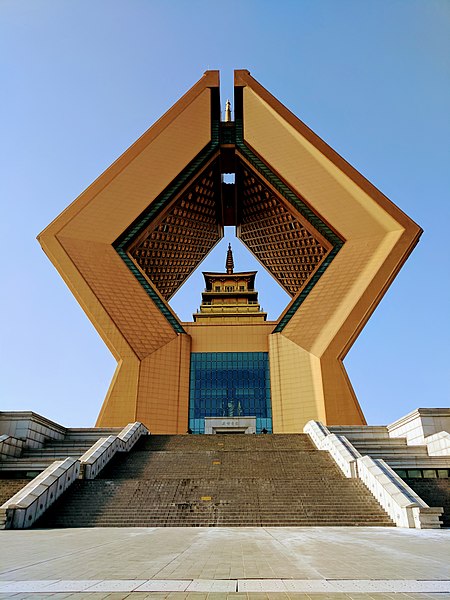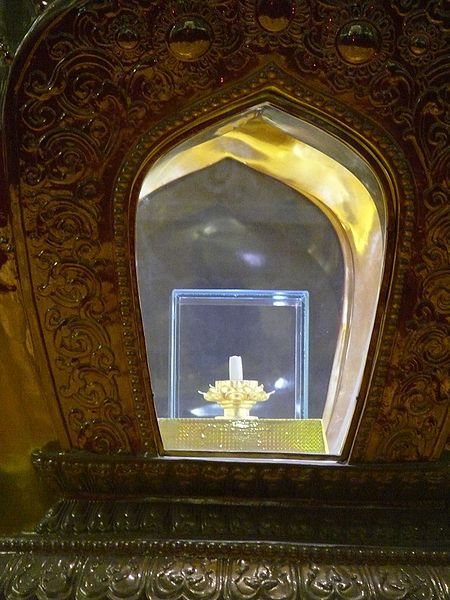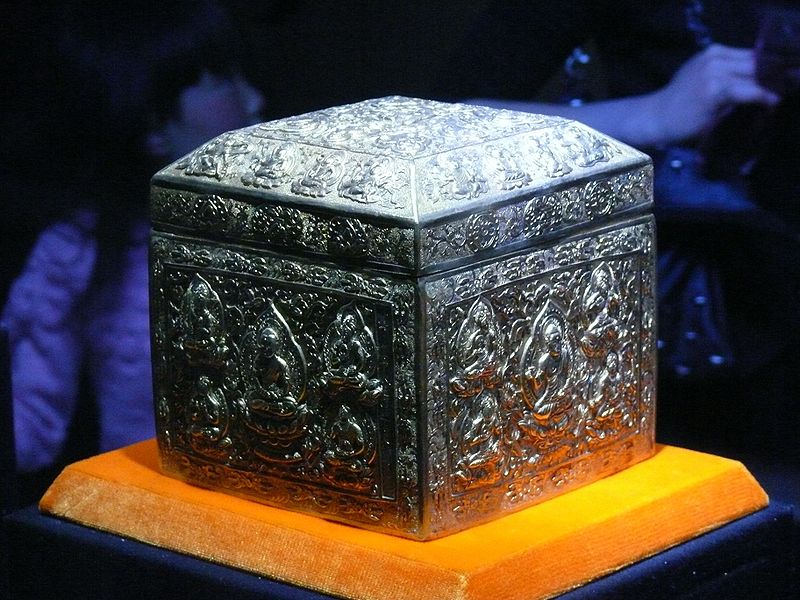Famen Temple

Facts and practical information
Famen Temple, an ancient Buddhist site in Shaanxi Province, China, is a historical and cultural treasure that has stood for over a millennium. Established during the Eastern Han Dynasty, it became renowned for housing a sacred relic believed to be a finger bone of the Sakyamuni Buddha. This significant artifact has made Famen Temple a site of pilgrimage for devout Buddhists and a point of interest for history enthusiasts and tourists alike.
The temple complex underwent significant restoration and expansion in the late 20th century, leading to the discovery of numerous cultural relics and treasures that further solidified its importance. The most striking feature of the modern Famen Temple is its towering Famen Temple Pagoda, a blend of ancient and contemporary architectural styles, which symbolizes the fusion of tradition with modernity.
Visitors to Famen Temple can explore a variety of halls and structures that reflect the temple's rich history. The complex includes the Grand Hall of Great Sage, the Hall of Mahavira, and a museum that displays a vast collection of artifacts unearthed from the site, offering a glimpse into China's profound Buddhist heritage and the temple's storied past.
Shaanxi


